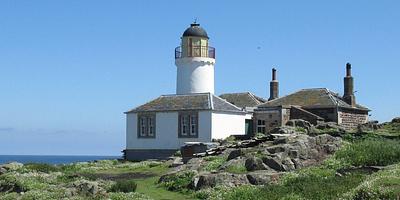
Celebrating Women in Science
Evelyn Vida Baxter and Leonora Jeffrey Rintoul
Our Project Manager, Dora Roden, celebrates the work of pioneering ornithologists Evelyn Vida Baxter and Leonora Jeffrey Rintoul.
Two of Scotland’s most influential ornithologists were lifelong friends Evelyn Vida Baxter (1879-1959) and Leonora Jeffrey Rintoul (1878-1953). First making their mark over a century ago, their work remains important today. True pioneers in their field, “the good ladies” as they were known, were first to theorise that the wind could affect bird migration routes and were instrumental in the establishment of the Scottish Ornithologists’ Club (SOC).
Born less than a year apart and growing up within a mile or so from one another near Largo in Fife, Evelyn and Leonora also shared a passion for the natural world. Both kept diaries from a young age of the wildlife they observed in their daily lives. In one entry from May 1890, for example, Evelyn wrote "saw a tree sparrow and found its nest and eggs in the beech hedge, round the kitchen garden." These diaries evolved over time into meticulously kept field notebooks on birdlife, kept for decades.
The pair were kindred spirits, who, while still in their teens began field trips to places such as bird-rich Tentsmuir on the North East coast of Fife. At that time, the area was being made into a nature reserve and eminent ornithologists involved in the project gave the young ladies every encouragement to study birds. After meeting ornithologist Dr William Eagle-Clarke and hearing of his trips to Fair Isle to study bird migration, the ladies began their own regular trips to the Isle of May to do the same.
The pair studied bird migration on the Isle of May for a quarter of a century, from 1907 until 1933, visiting every Spring and Autumn and generating vast observation records. It was the ladies who introduced thorough record keeping on the weather conditions each day, allowing a link to be made between wind and migration routes. It became clear that migration routes were not rigidly fixed but rather birds could, in certain conditions, be blown somewhat “willy nilly” by the wind.
As the duo built up knowledge of the ‘normal distribution’ of bird species, they were able to spot variation more easily and were able to comment upon anomalies and pattern changes over time. Baxter and Rintoul began to publish papers and books. In a 1929 publication they reflected that "though there is a long way yet to be traversed, the continued work done in bird observation is steadily bringing us nearer to our goal of a correct knowledge of the status of every bird in Scotland".
_Scottish_Ornithologists%E2%80%99_Club_archive.jpg)
_Scottish_Ornithologists%E2%80%99_Club_archive..jpg)
As their work continued, and public interest in bird watching grew, steps began to be taken to found a national bird club. Early in 1936, Miss Baxter, Miss Rintoul, H F D Elder and George Waterston attended a meeting in Edinburgh at which it was resolved to do just that. And so, began the Scottish Ornithologists’ Club which today still thrives and has its purpose-built headquarters overlooking the Aberlady Bay Local Nature Reserve in East Lothian.
Age did nothing to dampen the enthusiasm of Baxter and Rintoul for the study of birds and their diligent lifelong study culminated in the publication of their landmark work, the two volume 'The Birds of Scotland - Their History, Distribution and Migration'. Published in 1953, just before the death of Leonora Rintoul, this huge achievement reflected the authors love and knowledge of birds across the whole of Scotland. The book's summary states:
"Of late years the study of ornithology has become much more popular and widespread and, although there are many fine reference works covering birds in Scotland and some good local books, there has never been a comprehensive work on the Birds of Scotland. It seemed well, therefore, that these scattered records, many of great value, should be gathered together to form a comprehensive work. This is what the authors have tried to do and to show also how much the character of the country influences its bird life."
_Dora_Roden.jpg)
The enduring partnership of Baxter and Rintoul was in the forefront of Scottish ornithology for many years - at a time when females were rarely found in the field. Both were made fellows of the Royal Society of Edinburgh and Baxter received an honorary degree in 1955 from Glasgow University. The work of these two inspirational women really provided a baseline for much of the ornithological study in Scotland that followed.
With thanks to the Scottish Ornithologists' Club for both information and images.
